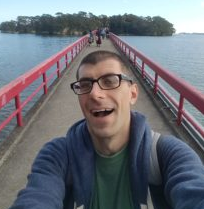Abstract
This presentation briefly introduces the Japanese Vajrayana tradition of Shingon Buddhism and a few of its fundamental breathing techniques. It then summarizes some of the ways such meditative practices in the tradition have been used historically and in contemporary times.
Questions for reflection
What do you think Kukai meant by calling the letter “A” the “mother of all letters”?- In what ways is Shingon art related to religious practice and healing?
What do you think about the link between art, visualization, and healing practices?
How much can a religious or spiritual tradition adapt and change while still being considered part of the “tradition”?- In what ways do you think contemplative traditions can be applied to modern health?
Further reading
Abe, Ryuichi. The Weaving of Mantra: Kukai and the Construction of Esoteric Buddhist Discourse. New York: Columbia University Press, 2013.
Michon, Nathan Jishin. “A Contemporary Shingon Priest’s Meditation Therapies: Selections from the Writings of Ōshita Daien” in Buddhism and Medicine: Contemporary and Modern Sources, ed., C. Pierce Salguero, Columbia University Press, 2019.
Oda, Ryūkō. Kaji: Empowerment and Healing in Esoteric Buddhism. Tokyo: Kineizan Shinjō-in Mitsumonkai Publishing, 1992.
Stone, Jacqueline I., and Robert E. Buswell Jr. Right Thoughts at the Last Moment: Buddhism and Deathbed Practices in Early Medieval Japan. Honolulu: University of Hawaii Press, 2016.
Triplett, Katja. “Healing Rituals in Contemporary Japanese Esoteric Buddhism as Acts of Individual and Collective Purification.” In Purification: Religious Transformations of Body and Mind, edited by Gerhard Marcel Martin and Katja Triplett, 107–17. London: Bloomsbury Publishing, 2013.
Unno, Mark.Shingon Refractions: Myōe and the Mantra of Light. Somerville, MA: Wisdom Publications, 2004.
Watts, Jonathan S. “Introduction.” In Buddhist Care for the Dying and Bereaved, edited by Jonathan S. Watts and Yoshiharu Tomatsu, 1–17. Boston: Wisdom Publications, 2012.
Winfield, Pamela D. “Coronation at Koyasan: How One Woman Became King and Learned about Homeland Security and National Health Care in Ancient Japan.” In Studying Buddhism in Practice, 11–24. New York: Routledge, 2012.
———. “Curing with Kaji.” Japanese Journal of Religious Studies 32, no. 1 (2005): 107–30.
Nathan Jishin Michon recently completed his PhD through Graduate Theological Union. Their primary research areas are Buddhist chaplaincy, crisis care, and Japanese religions. Michon previously obtained an MDiv in Buddhist chaplaincy from University of the West and has practiced as a volunteer chaplain as well. Their previous publications include A Thousand Hands: A Guidebook to Caring for Your Buddhist Community and the “Buddhist Chaplaincy” entry in the Online Oxford Encyclopedia of Religion. They are an ordained Buddhist priest within the Shingon tradition and co-director of interfaith ministry education with Unity and Diversity World Council.

